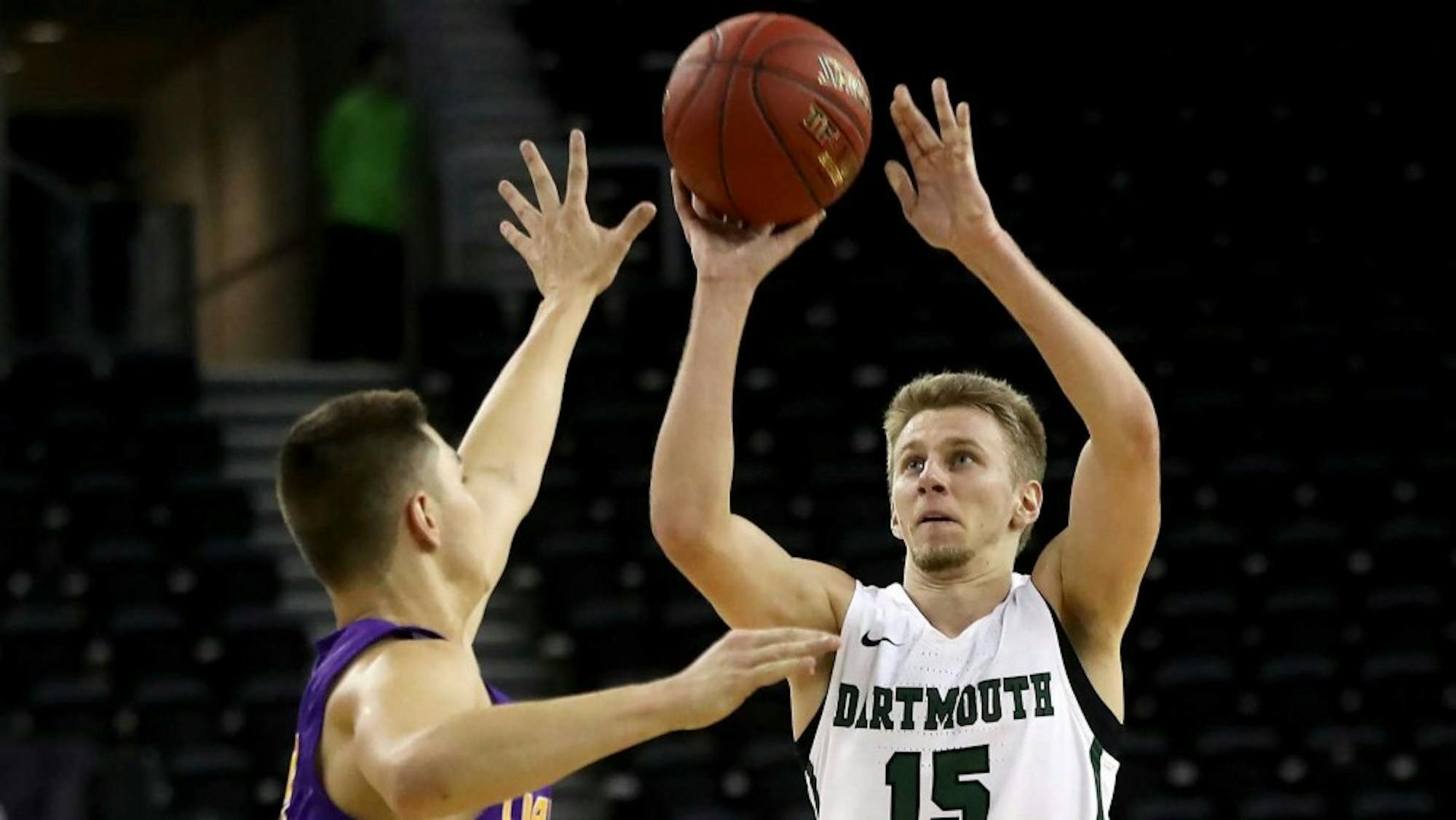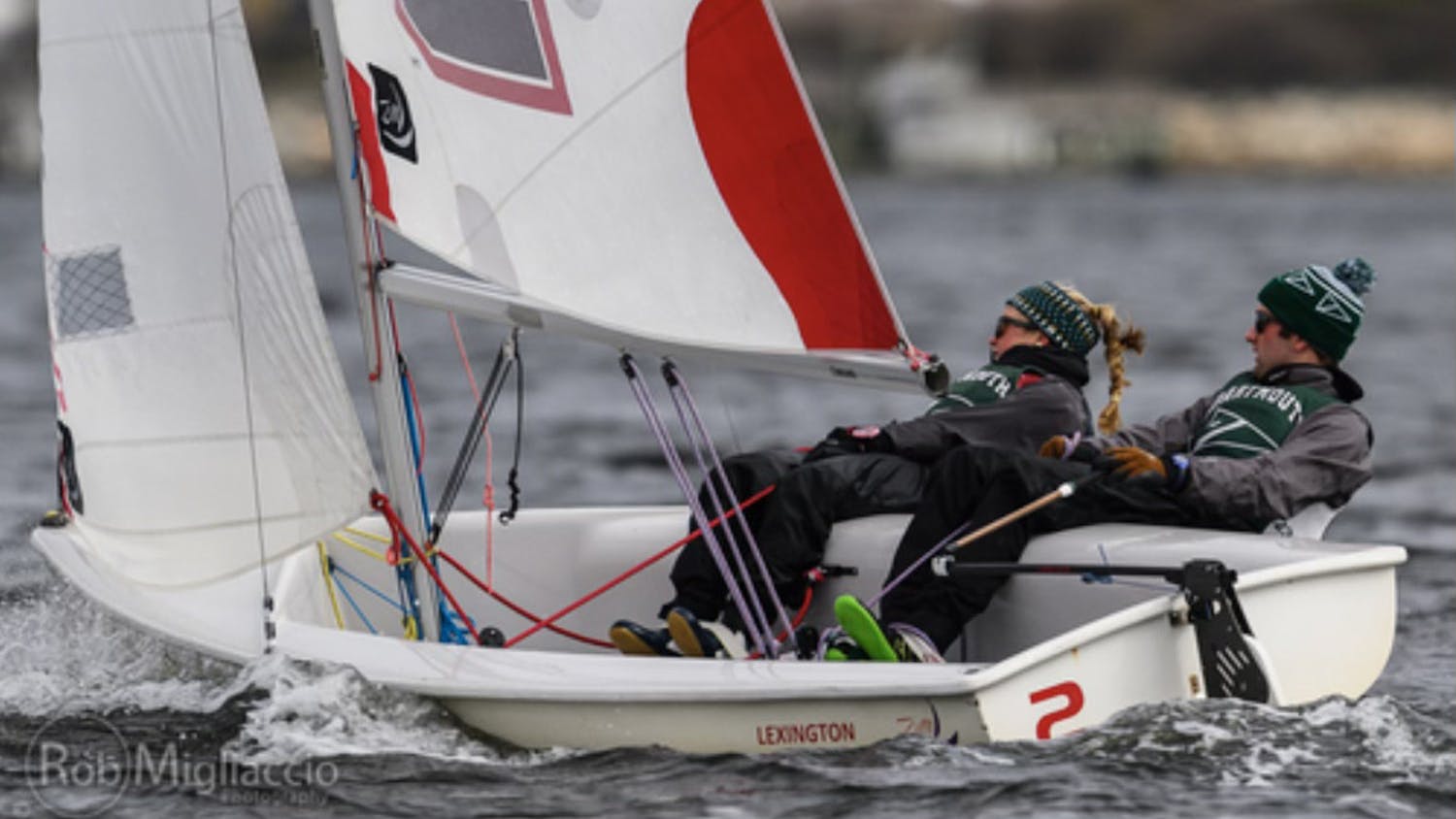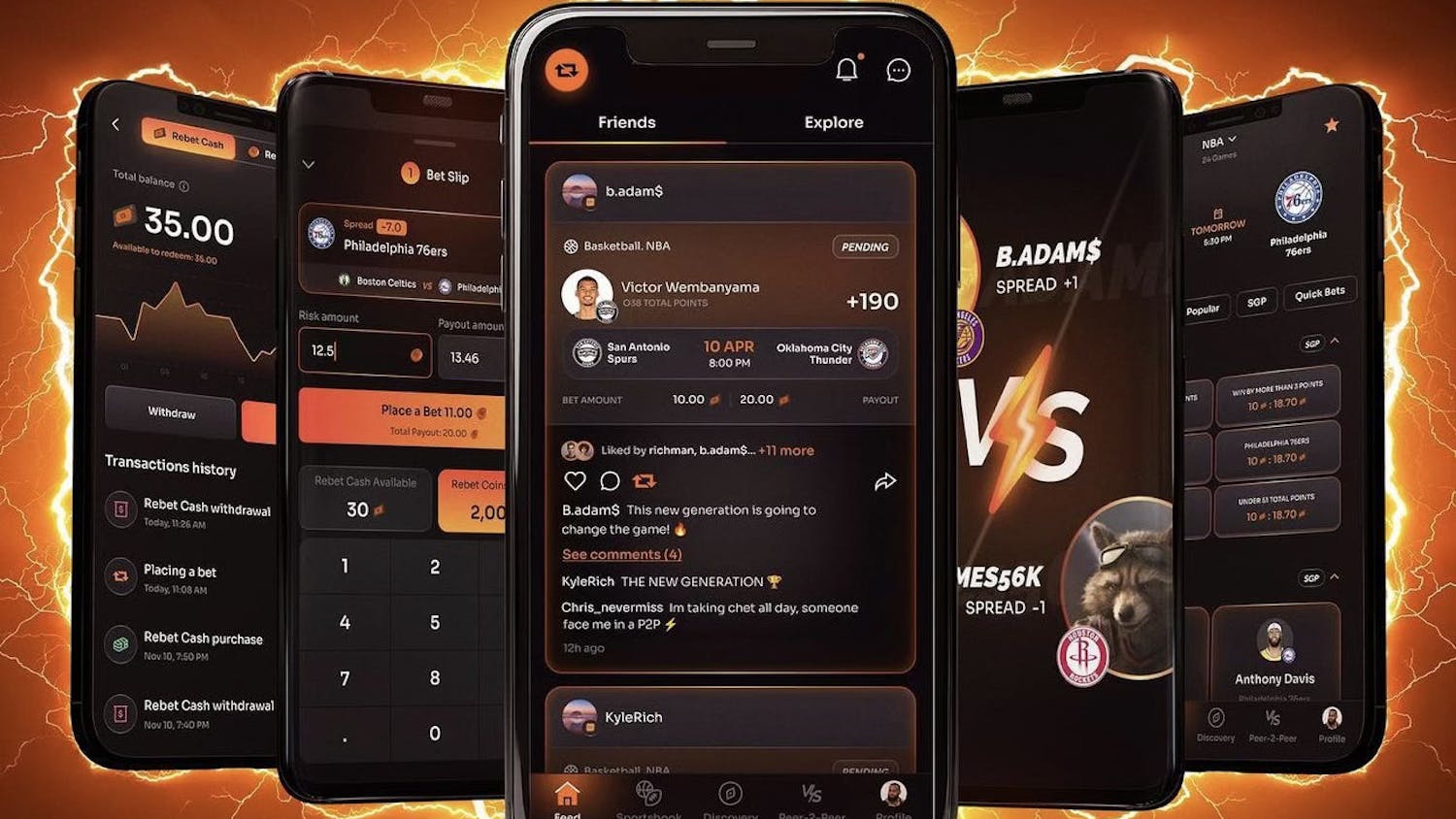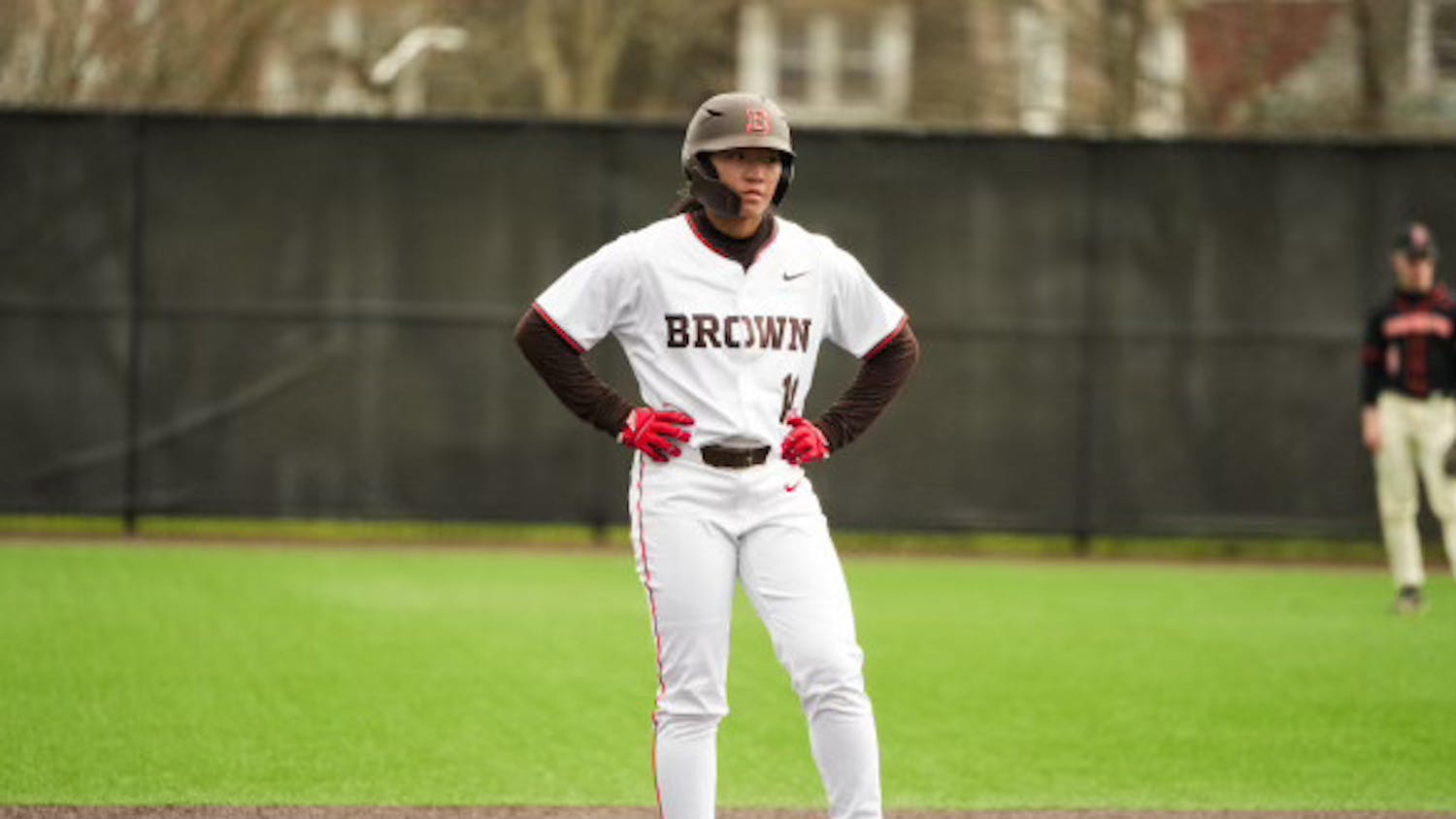At a stellar academic institution like Dartmouth, it shouldn’t be a surprise to see the Big Green using its intelligence to its advantage on the basketball court.
Conventional wisdom in basketball is that 3-point shots, while providing a large payoff, are less likely to go in and aren’t often best for a team. Teams that shoot too many 3-pointers are often seen as inconsistent and doomed for mediocrity, as they can easily struggle if they don’t shoot well on a particular night.
Yet the Dartmouth Big Green, at 10-8, is having its best season in 22 years thanks to a tremendous season of 3-point shooting. Brendan Barry ’20 currently leads the entire NCAA with an incredible 3-point shooting percentage of 51.8 percent, while James Foye ’20 and Ian Sistare ’20 aren’t far behind at 48.6 percent and 45.6 percent, respectively.
“It’s cool to be up there in the rankings, but I couldn’t do it without my teammates and my coaches,” Barry said. “Our coaches are drawing up great plays and my teammates are getting me open looks, which plays a huge part.”
With the amazing season Barry’s been having, it’s safe to say he’s earned the trust of the coaching staff.
“They’re basically encouraging him to shoot whenever he wants,” Foye said. “Even his contested 3s go in, so they’re urging him to take more and more shots.”
Barry’s tremendous shooting has gotten much of the press, but the team’s strong shooting season can be attributed to a handful of players. In the 2017-18 season, the Big Green shot just 35.9 percent from beyond the arc en route to a 7-20 season, but it has improved greatly to the tune of a 40.5 percent clip this season.
Even more amazing is the frequency with which the team shoots its long balls. The team shot just 557 3-pointers in 27 games last season, but it’s already taken 479 in just 18 games this season. The team is averaging 5.98 more 3-point attempts per game and 3.4 more successful 3-pointers per game this year compared to last year.
“Our coaching staff is into this new wave of analytics in basketball,” Foye said. “We’re looking for the most efficient shots, so when it comes down to it, we want to be shooting either layups or 3s.”
Foye referenced a hypothetical yet realistic example of a team shooting 40 percent from 3-point range and 50 percent from 2-point range, not too far off from Dartmouth’s true averages of 40.5 percent on 3s and 45.7 percent from the field. The expected points per possession value is greater in this case if you shoot a 3-pointer, as 40 percent odds to make a shot worth three points yields an expected value of 1.2 points per possession in comparison to just 1.0 points per possession for a 2-point shot with 50 percent odds.
Armed with these facts, the Big Green changed its philosophy to encourage more 3-point shooting.
“The coaching staff made it a priority for everyone to shoot more 3s,” Foye said. “Our starting guards and a lot of our bench players were known for shooting in high school, so it plays into our strengths.”
With three stellar shooters in Barry, Foye and Sistare, opponents have to respect the three-point shot if they want to slow down the Big Green offense. However, with forward Chris Knight ’21 leading the team with 15.4 points per game and providing a significant threat in the post, defenses are faced with a difficult dilemma defending Dartmouth. Either they take away Knight down low and hope the shooters have an off night, or they guard the perimeter heavily and trust their one-on-one matchup against Knight.
“Having Knight in the post really opens things up for us,” Barry said. “If they try to double him, it will leave us with open shots, and our guards shooting as well as we have opens things up for him as well. It works both ways.”
While Barry, Foye and Sistare were all known for their shooting abilities coming into Dartmouth, coach David McLaughlin made it a priority for the team to work on its shooting consistently over the offseason to rise to the elite level at which it’s currently performing.
“The biggest thing we encouraged during the offseason was for guys to get to the gym on their own,” McLaughlin said. “It started in the summer with guys like Ian and James being in the gym every day and continued into the fall.”
With the team’s guards having a natural penchant for shooting and a consistent work ethic, the coaching staff has faith in them to make their open 3s. This trust that the coaching staff has in its players to make open shots has certainly benefited the team mentally.
“Confidence in basketball is huge, so when you know that your coaches want you taking shots, you’re not thinking in the back of your head when you shoot,” Foye said. “It allows you to just focus on making the shot.”
With so many strong shooters, the team knows most of its possessions will end with a top-tier shooter taking a high-percentage shot. McLaughlin seconded the notion that this has allowed them to relax and play with more confidence.
“We realize the value of moving the ball and making sure we’re getting to great shots every possession,” McLaughlin said. “We’ve got guys who can spread out the defense and shoot it, so there’s no need for us to turn the ball over. We’re going to get a good or great shot every possession.”
This increased confidence and better shooting carried Dartmouth to an impressive 9-7 non-conference record, but Dartmouth was even more impressive in its Ivy League opener against Harvard University. It shot a phenomenal 68.1 percent from the field, including 52 percent from 3-point range. Thanks to the team’s unbelievable shooting performance, it dominated the Ivy League powerhouse Crimson 81-63.
“That was a crazy performance that’s hard to repeat, but I still think we can shoot at similar percentages based on how well we move the ball and find open looks,” Barry said.
In the team’s second game against Harvard, it wasn’t able to repeat that stellar performance in a 64-59 defeat in Cambridge. Nobody expected the team to shoot around 70 percent from the field like it did two weeks prior, but the team’s 37.9 percent success rate from the field certainly fell short of expectations.
Dartmouth led 26-25 going into halftime, but it fell behind late in the second half and couldn’t close the gap. After knocking down four 3-pointers earlier in the game, Barry couldn’t sink the potential game-tying triple as the Big Green dropped a heartbreaker.
Yet even on one of the team’s worst shooting days all season, it just barely lost to a traditional Ivy League powerhouse. Taurus Samuels ’22 stepped up with four 3-pointers of his own, potentially adding another member to the group of sharpshooting guards.
With a 1-1 Ivy League record and a 10-8 overall record, the Big Green is still in the midst of a promising season and an exceptional shooting season on a national scale. With the team continuing to create open looks and knock down open shots, it’s a legitimate threat to defeat any opponent as the season progresses.




